This article was co-authored by Carrie Noriega, MD. Dr. Noriega is a Board Certified Obstetrician & Gynecologist and medical writer in Colorado. She specializes in women’s health, rheumatology, pulmonology, infectious disease, and gastroenterology. She received her MD from the Creighton School of Medicine in Omaha, Nebraska and completed her residency at the University of Missouri - Kansas City in 2005.
There are 24 references cited in this article, which can be found at the bottom of the page.
wikiHow marks an article as reader-approved once it receives enough positive feedback. This article received 20 testimonials and 95% of readers who voted found it helpful, earning it our reader-approved status.
This article has been viewed 693,004 times.
Vaginal infections are very common and most women will experience at least one during their lifetime. You should not be embarrassed. While they are uncomfortable and irritating, they can be cured. However, they do sometimes come back, so some women may experience more than one infection or what seems like a continuous infection. It is important that you pay attention to your vagina and be aware of any unusual symptoms.
Steps
Recognizing Symptoms
-
1Know what is normal. It is completely normal to have some discharge. Your discharge should be clear, a little cloudy, or sometimes white. Your vagina is self-cleaning, and discharge is part of the cleaning process. Your discharge should not have a strong smell or be itchy, although some odour is common, especially during your period.[1]
- The amount and consistency of discharge changes throughout your menstrual cycle. It can go from thin and watery to thick. Sometimes you may have a little and other times a lot.
- Every woman's body is different. A normal amount of discharge for you may not be normal for someone else. You should pay attention to your discharge so that you can gauge what is normal for you.[2]
-
2Know common causes of infections. The two most common vaginal infections are bacterial vaginosis and yeast infections. Both of these infections are caused by organisms that naturally occur in your vagina. Yeast infections are caused by having too much yeast in your vagina,[3] and bacterial vaginosis happens when the proper balance of bacteria in your vagina is thrown off.[4]Advertisement
-
3Look for abnormal discharge. Abnormal vaginal discharge is one of the most common signs of a vaginal infection. If the color, consistency, or amount of discharge changes, you may have an infection.[9]
- If you notice a fishy smell in your vagina, it is probably bacterial vaginosis.[10] If you have discharge that looks like cottage cheese, you may have a yeast infection.[11]
- Abnormal discharge is also may be a sign that you have chlamydia or gonorrhea.[12] [13]
- Greenish, frothy discharge is common with trichomoniasis.
-
4Notice any itching or burning. Itching and burning are never normal and indicate that you may have a vaginal infection. Having an increased urge to pee or having a burning sensation when you pee is another sign that you may have an infection.[14]
-
5
-
6Call your doctor. You should never try to diagnose and treat your vaginal infection on your own. If you notice anything unusual, you need to call your doctor. Many infections have the similar symptoms but require different treatments. Getting the proper diagnosis is very important.[17]
- You should be prepared to tell your doctor the color, smell, and consistency of your discharge, the amount of time you have been experiencing symptoms, and any products (i.e. detergent, perfume, vaginal sprays, spermicides, or douches) that you have been using. Detailed information will help your doctor diagnose you.
- Your doctor may do a gynecological exam after you talk about your symptoms. They also may take a sample of your discharge or urine to test for an infection.[18]
- About 90% of vaginal infections can be cured within two weeks or less. Untreated vaginal infections can last for years and can lead to infertility and pelvic inflammatory disease.[19] [20]
- There are over the counter treatments for yeast infections. You should visit your doctor before you try a treatment. For example, if you take Monistat to treat a yeast infection when you really have bacterial vaginosis, your symptoms will not get any better.
Preventing Vaginal Infections
-
1Get regular checkups. Women should have a pelvic exam as part of their yearly physical. Your doctor will be able to check for any signs of illness during your visit. This is the time to ask any questions or discuss any concerns or symptoms you may be having.[21]
- You should not douche, use a tampon, have sex, or use any medicine or cream in your vagina two days before your visit.
- The exam should not take more than 10 minutes.[22]
- If you are sexually active, you should ask your doctor to screen you for sexually transmitted infections (STIs). Many people do not experience symptoms when they have some STIs such as chlamydia, gonorrhea, and HPV. Yearly screening will help with identifying and treating these infections before they have any lasting effects.[23]
- You should use condoms if you are sexually active. This can prevent your partner from passing a STI to you. You should still get tested regularly even if you use condoms.[24]
-
2Wear proper clothing. You should wear underwear that keeps your genital area dry and does not hold moisture. Cotton is the preferred fabric. You should also avoid wearing tight fitting clothing because it can trap heat and moisture around your genital area. If you work out or go swimming, you should change out of your wet clothes as soon as possible.[25]
- When you are on your period, you should change your tampons and pads regularly.
- Make sure your non-cotton underwear, leggings, workout gear, and pantyhose have a cotton panel in the crotch area
-
3Clean your vagina properly. Your vagina is a self-cleaning organ. You should not do anything that may upset the natural balance if your vagina because it can lead to an infection.[26]
-
4Eat yogurt with active cultures. Foods live and active cultures can help keep the right pH balance in your vagina. Probiotics is another common term for these cultures. Good sources of probiotics are yogurt, kimchi, sauerkraut, and miso. Make sure your yogurt label says "contains live and active cultures." Eating one cup of yogurt a day is adequate.[29]
-
5Wipe properly. When you use the bathroom, make sure you wipe from front to back. Wiping from back to front will spread yeast and bacteria from your anus to your vagina or your urinary tract.[30] Spreading bacteria through improper wiping can cause bacterial vaginosis or a yeast infection.
Expert Q&A
-
QuestionWhat can be done for watery discharge associated with itching?
 Carrie Noriega, MDDr. Noriega is a Board Certified Obstetrician & Gynecologist and medical writer in Colorado. She specializes in women’s health, rheumatology, pulmonology, infectious disease, and gastroenterology. She received her MD from the Creighton School of Medicine in Omaha, Nebraska and completed her residency at the University of Missouri - Kansas City in 2005.
Carrie Noriega, MDDr. Noriega is a Board Certified Obstetrician & Gynecologist and medical writer in Colorado. She specializes in women’s health, rheumatology, pulmonology, infectious disease, and gastroenterology. She received her MD from the Creighton School of Medicine in Omaha, Nebraska and completed her residency at the University of Missouri - Kansas City in 2005.
Board Certified Obstetrician & Gynecologist A watery discharge with itching should be checked out by your doctor. This may be a sign of an infection.
A watery discharge with itching should be checked out by your doctor. This may be a sign of an infection. -
QuestionI get white and green discharge (never at the same time) and I get a lot of it every day. How can I get this to stop/what should I do?
 Carrie Noriega, MDDr. Noriega is a Board Certified Obstetrician & Gynecologist and medical writer in Colorado. She specializes in women’s health, rheumatology, pulmonology, infectious disease, and gastroenterology. She received her MD from the Creighton School of Medicine in Omaha, Nebraska and completed her residency at the University of Missouri - Kansas City in 2005.
Carrie Noriega, MDDr. Noriega is a Board Certified Obstetrician & Gynecologist and medical writer in Colorado. She specializes in women’s health, rheumatology, pulmonology, infectious disease, and gastroenterology. She received her MD from the Creighton School of Medicine in Omaha, Nebraska and completed her residency at the University of Missouri - Kansas City in 2005.
Board Certified Obstetrician & Gynecologist Since there is a greenish color to your discharge, you should get it checked out by your doctor.
Since there is a greenish color to your discharge, you should get it checked out by your doctor.
References
- ↑ https://familydoctor.org/condition/vaginal-discharge/
- ↑ https://my.clevelandclinic.org/health/symptoms/4719-vaginal-discharge
- ↑ https://my.clevelandclinic.org/health/diseases/5019-yeast-infections
- ↑ https://my.clevelandclinic.org/health/diseases/3963-bacterial-vaginosis
- ↑ https://medlineplus.gov/chlamydiainfections.html
- ↑ https://www.cdc.gov/std/gonorrhea/stdfact-gonorrhea.htm
- ↑ https://my.clevelandclinic.org/health/diseases/4248-genital-herpes-hsv-2
- ↑ https://my.clevelandclinic.org/health/diseases/4696-trichomoniasis
- ↑ https://www.cdc.gov/fungal/diseases/candidiasis/genital/index.html
- ↑ https://my.clevelandclinic.org/health/diseases/3963-bacterial-vaginosis
- ↑ https://my.clevelandclinic.org/health/diseases/5019-yeast-infections
- ↑ http://www.cdc.gov/std/chlamydia/stdfact-chlamydia-detailed.htm
- ↑ http://www.cdc.gov/std/Gonorrhea/
- ↑ https://www.womenshealth.gov/a-z-topics/vaginal-yeast-infections
- ↑ https://www.womenshealth.gov/a-z-topics/vaginal-yeast-infections
- ↑ https://www.hopkinsmedicine.org/health/wellness-and-prevention/what-causes-painful-sex
- ↑ https://www.womenshealth.gov/a-z-topics/vaginal-yeast-infections
- ↑ http://www.drugs.com/health-guide/vaginitis.html
- ↑ http://www.drugs.com/health-guide/vaginitis.html
- ↑ http://www.cdc.gov/std/chlamydia/stdfact-chlamydia-detailed.htm
- ↑ https://www.acog.org/womens-health/faqs/pelvic-exams
- ↑ https://my.clevelandclinic.org/health/diagnostics/17343-pelvic-exam
- ↑ https://my.clevelandclinic.org/health/diseases/9138-sexually-transmitted-diseases--infections-stds--stis
- ↑ https://www.cdc.gov/std/prevention/default.htm
- ↑ https://myhealth.alberta.ca/Health/aftercareinformation/pages/conditions.aspx?hwid=uf7069
- ↑ https://my.clevelandclinic.org/health/articles/4976-vulvar-care
- ↑ https://www.plannedparenthood.org/learn/health-and-wellness/vaginitis/how-do-i-prevent-vaginitis
- ↑ https://www.plannedparenthood.org/learn/health-and-wellness/vaginitis/how-do-i-prevent-vaginitis
- ↑ https://www.womenshealth.gov/a-z-topics/vaginal-yeast-infections
- ↑ https://emedicine.medscape.com/article/1958794-overview
- ↑ https://www.cdc.gov/antibiotic-use/uti.html
- ↑ https://medlineplus.gov/ency/patientinstructions/000687.htm
About This Article
While vaginal infections are uncomfortable, they are common and can be cured once you recognize the signs. All women experience discharge, which changes during the course of your cycle, but if the color, consistency, or amount drastically changes, smells fishy, or looks like cottage cheese, then you may have an infection. You might also notice itching or burning sensations or having an increased urge to pee. If you suspect that you have an infection, call your doctor for a diagnosis and treatment plan. To prevent future infections, wash the area around your vagina with unscented soap and water daily. You'll also want to wear cotton underwear and change out of damp workout gear as soon as possible. For more tips from our Medical co-author, including how to prevent vaginal infections with your diet, keep reading!



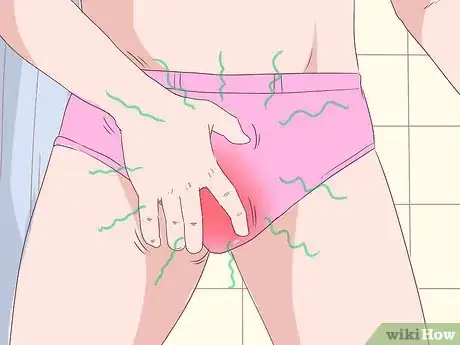






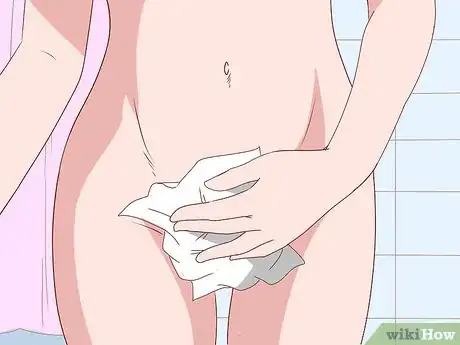








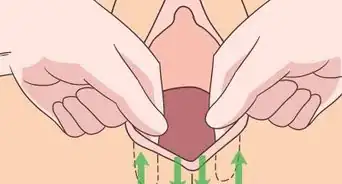


-Step-10-Version-2.webp)














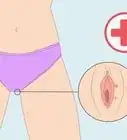
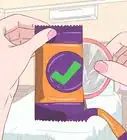



































Medical Disclaimer
The content of this article is not intended to be a substitute for professional medical advice, examination, diagnosis, or treatment. You should always contact your doctor or other qualified healthcare professional before starting, changing, or stopping any kind of health treatment.
Read More...